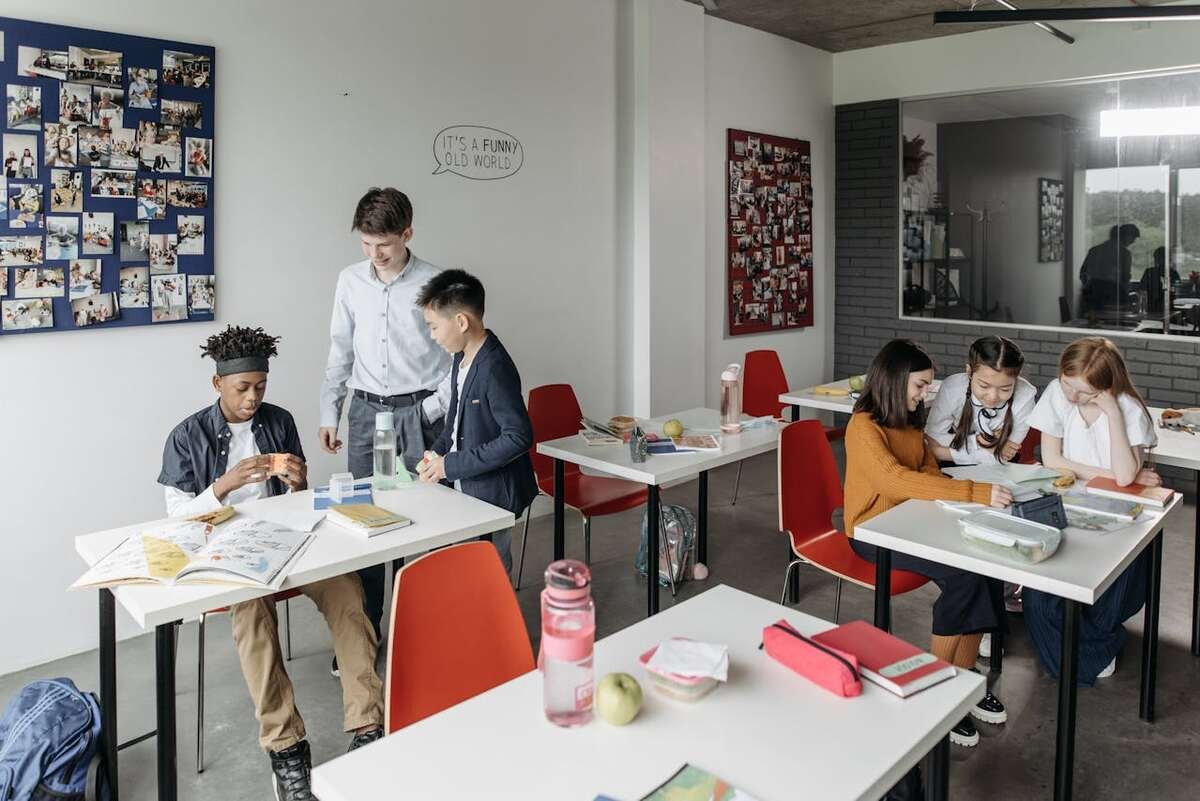Physical Address
304 North Cardinal St.
Dorchester Center, MA 02124
Physical Address
304 North Cardinal St.
Dorchester Center, MA 02124

Gamification in Education Makes Learning Fun—especially in today’s digital-first world, where keeping students engaged is more challenging than ever. Traditional teaching methods—lectures, textbooks, and static quizzes—often struggle to hold attention in the age of instant gratification. Enter gamification: a dynamic strategy that borrows elements from games to transform education into an interactive, exciting, and even addictive experience. But how exactly does gamification make learning more fun—and more effective?
Let’s explore the mechanics, benefits, and surprising power of gamification in education.
Gamification is the process of applying game-like elements—such as points, badges, leaderboards, and levels—to non-game contexts. In education, this means turning lessons, activities, or assessments into engaging challenges that motivate learners to participate more actively.
It’s not about turning every class into a video game. Instead, it’s about infusing the learning environment with motivational triggers that stimulate curiosity, competition, and achievement.
Gamification works because it taps into fundamental human psychology:
These psychological reinforcements keep learners coming back for more—just like a good game.
Bored students are disengaged students. Gamification changes the narrative by turning mundane tasks into compelling missions.
A 2022 report by EdTech Magazine found that classrooms using gamified tools saw a 34% increase in student engagement.
One of the most popular classroom tools, Kahoot! turns quizzes into live, fast-paced games. Students answer questions in real time, compete on a leaderboard, and earn points based on speed and accuracy.
This language-learning app uses daily streaks, XP points, and skill trees to make language acquisition feel like a role-playing game. Millions of users engage daily thanks to its addictive reward loop.
This platform turns an entire classroom into a fantasy role-playing game, where students level up for completing assignments, helping peers, or behaving well.
These tools don’t just entertain—they deliver measurable learning outcomes.
While commonly used in K-12 settings, gamification is gaining traction in higher education and corporate training too. Universities are using it to teach coding, history, and science, while companies use gamified modules to onboard employees and train managers.
According to Forbes, companies that use gamified training see up to a 60% increase in employee engagement.
Gamification’s appeal is universal because it aligns with how people naturally enjoy learning—through exploration, challenge, and reward.
Here are the most effective game-like mechanics used to transform lessons:
Teachers can adapt these tools using physical resources or digital platforms to fit any subject or age group.
Critics argue that gamification risks prioritizing entertainment over education. But when applied thoughtfully, gamification enhances—not replaces—solid pedagogical strategies.
Best practices include:
When well-integrated, gamification makes students eager to participate, increasing the time and energy they devote to learning.
Thinking about bringing gamification into your teaching or training? Start small:
You don’t need to be a tech wizard to gamify your classroom. Even simple tools like sticker charts or “mystery box” quizzes can add excitement and motivation.
As technology evolves, gamification is becoming more immersive—think virtual reality field trips, AI-generated quizzes, or blockchain-powered credentialing. These innovations promise to make learning even more dynamic and rewarding.
Gamification is not a fad—it’s a fundamental shift in how we approach motivation, engagement, and knowledge retention.
Gamification brings out the best in learners by making education feel less like a chore and more like a challenge worth mastering. It taps into curiosity, competitiveness, and creativity—turning passive learners into active participants.
Whether you’re a teacher, student, or lifelong learner, embracing gamified techniques can unlock new levels of excitement and achievement in education.
Inspired by this article? Share it with educators, parents, or learners in your circle—and check out more interactive learning strategies and education insights right here on our blog.